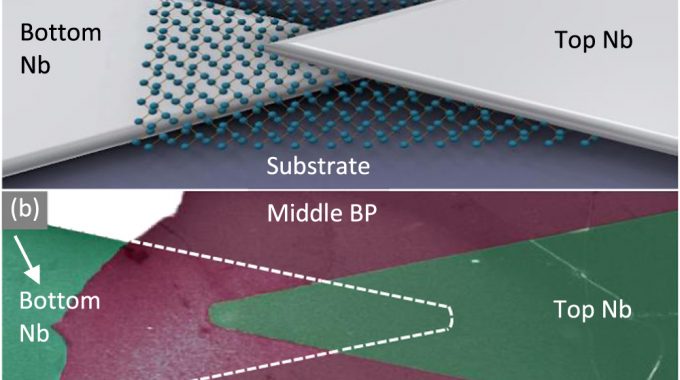
High-quality in situ fabricated Nb Josephson junctions with black phosphorus barriers
Authors: Wei Chen, Zuyu Xu, Wanghao Tian, Yangyang Lv, Mei Yu, Xianjing Zhou , Xuecou Tu, Jingbo Wu, Jun Li , Songlin Li, Biaobing Jin, Weiwei Xu, Dieter Koelle , Reinhold Kleiner, Huabing Wang and Peiheng Wu
Supercond. Sci. Technol. 32 115005
Abstract: Owing to appealing physical properties such as broad tunability in bandgaps and structural anisotropy, black phosphorus (BP) holds great potential in exploring novel electronic devices. However, it is extremely challenging to use BP to fabricate electronic devices, since it is prone to deteriorate in air. To address this challenge, we demonstrate an in situ fabrication technique which enables us to minimize interfacial degradation and to fabricate vertical Josephson junctions by employing few-layer BP as a barrier between two closely spaced Nb electrodes. The current–voltage characteristics of the junctions are hysteretic at low temperatures and become nonhysteretic when approaching the junction critical temperature. In the resistive state the differential conductance increases with decreasing voltage. Microwave-induced Shapiro steps were observed, confirming the presence of the ac Josephson effect. We present different models to analyze the current–voltage characteristics and conclude that resistive state of the current–voltage characteristics points to a zero bias anomaly, which is presumably caused by Andreev reflections. Our in situ fabrication technique represents a viable way to incorporate air-unstable materials for electronics and offer a chance to explore their unique functionalities.
